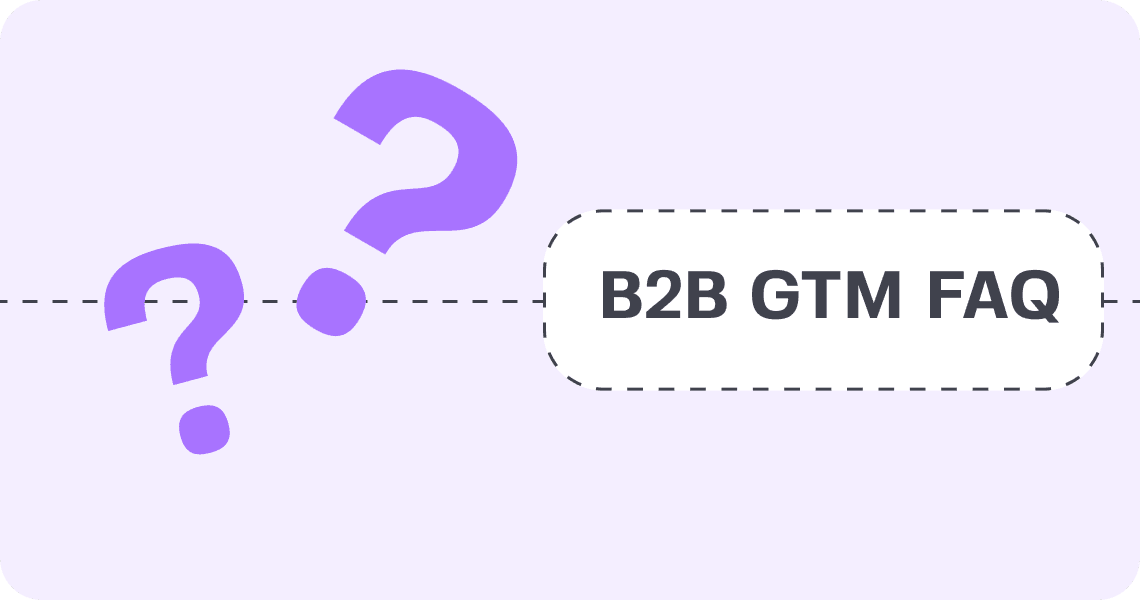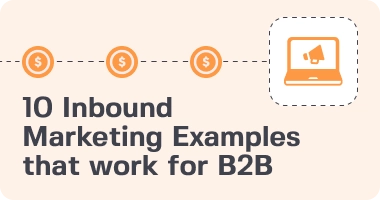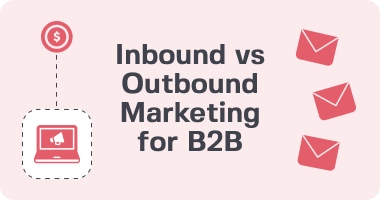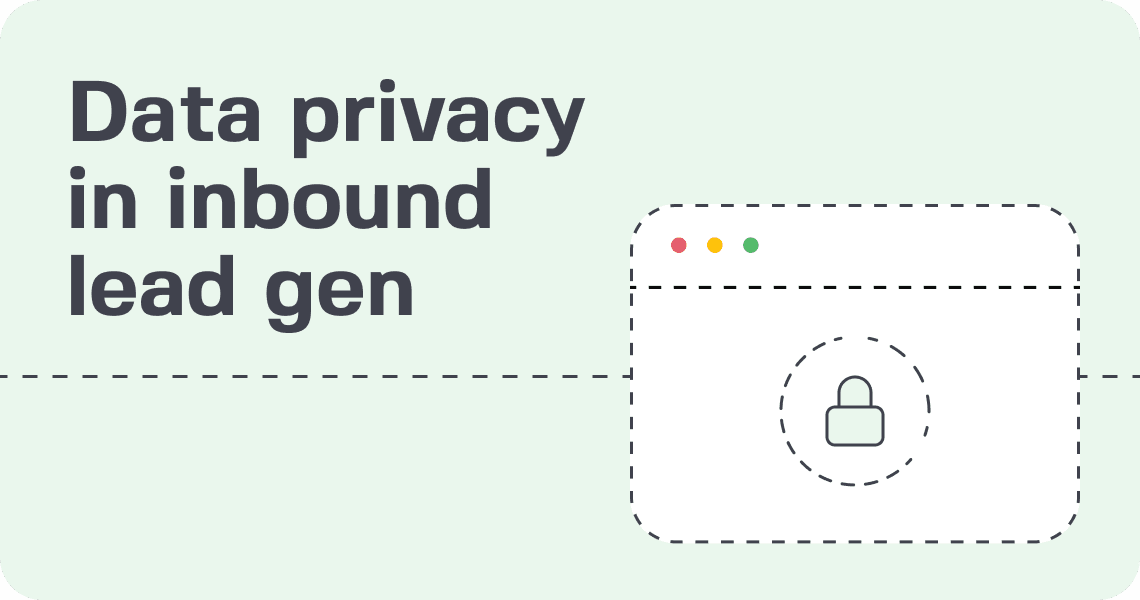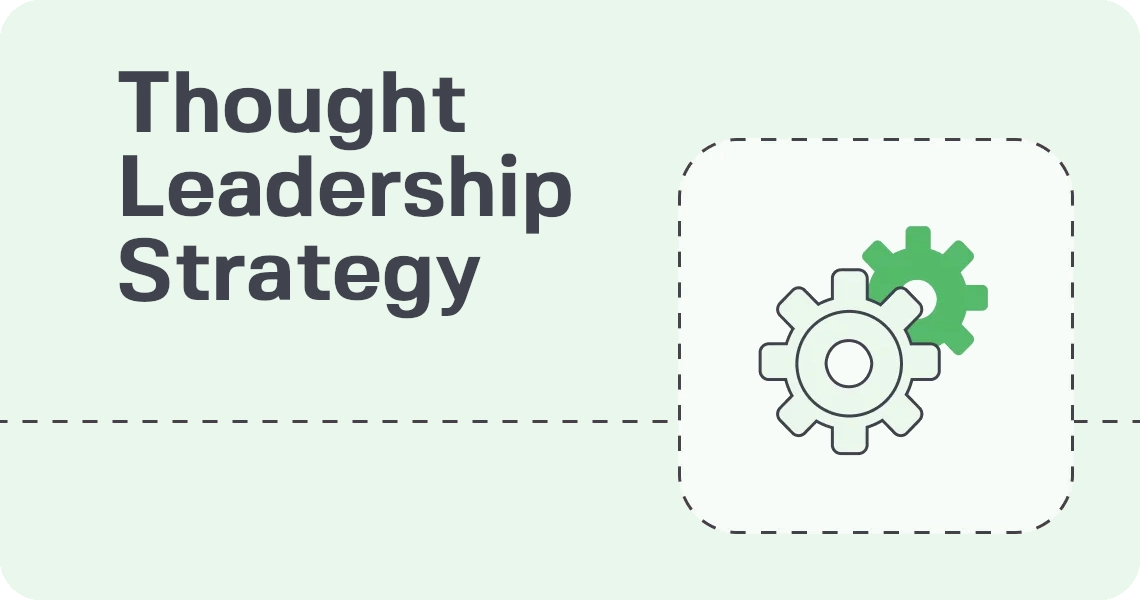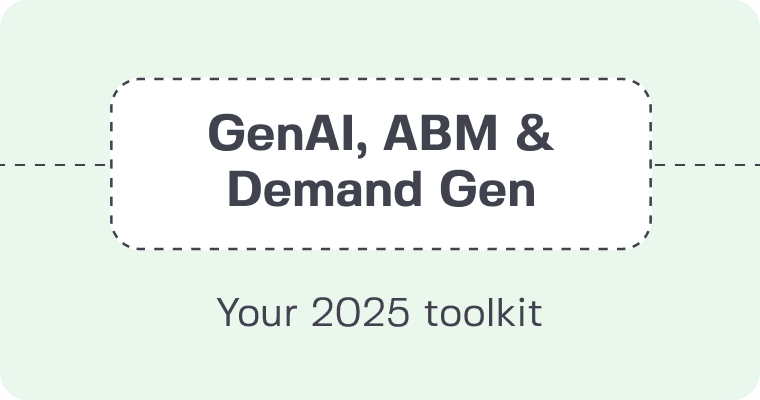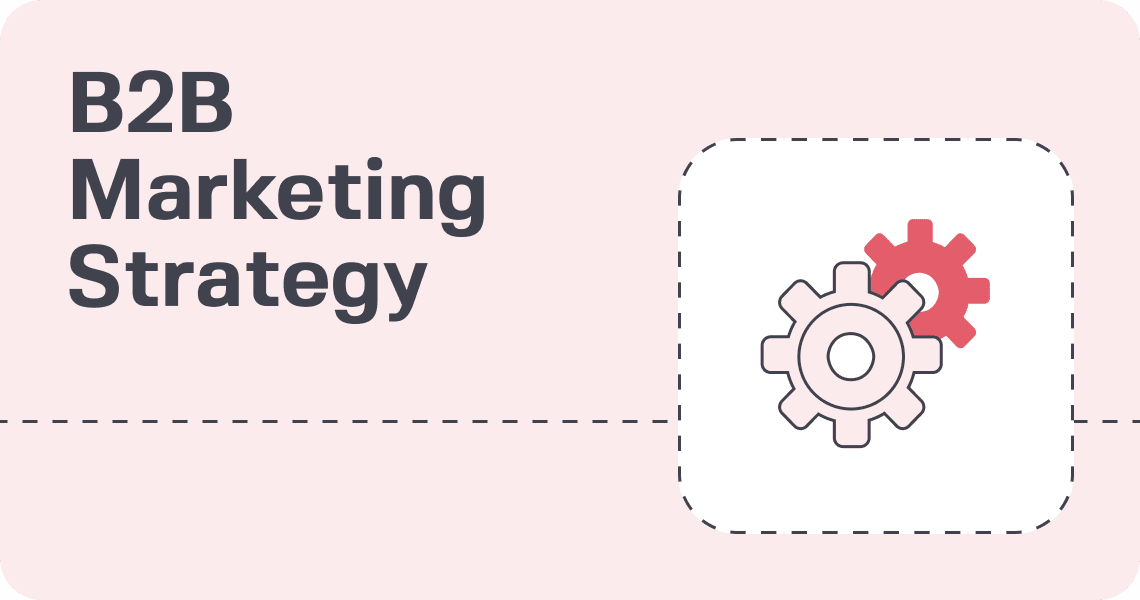Why the Right B2B Marketing Tools Matter for Tech Enterprises in 2026
The B2B marketing tools you choose this year will decide how quickly your enterprise can win deals, own its pipeline, and deliver measurable impact to the boardroom.
Digital marketing tools are essential for managing campaigns, tracking performance, and optimizing marketing efforts across digital channels.
For mid-sized and enterprise B2B tech businesses with long sales cycles, understaffed marketing teams, and siloed departments, the challenge isn’t just finding tools — it’s choosing tools that create visible, attributable performance gains without draining limited resources.
If you’ve ever sat in a quarterly review thinking:
“We have too many initiatives and not enough people to run them”
“We still can’t get sales and marketing aligned”
“We’re flying blind on which accounts to target”
… then you’re exactly who this guide is for. Effective communications are also crucial for bridging departmental silos and improving collaboration between sales and marketing.
Essential B2B Marketing Channels for Tech Enterprises in 2026
For mid-sized and enterprise B2B tech businesses with long sales cycles and resource-constrained marketing teams, choosing the right B2B marketing channels isn’t just a tactical move — it’s a strategic decision that impacts pipeline velocity, sales alignment, and revenue attribution. Social media marketing plays a crucial role in B2B strategies, enabling businesses to engage, listen, and create content across various social media platforms.
The most effective channels for tech enterprises are those that:
- Integrate directly with your martech stack (Salesforce, HubSpot Enterprise, Marketo, Adobe Experience Cloud)
- Deliver account-level insights to prioritize high-value accounts
- Scale globally while maintaining compliance and personalized engagement
- Enable management and optimization across multiple channels for a cohesive marketing strategy
- Support engagement with audiences on mobile devices as part of a comprehensive channel approach
- Leverage SEO, Gen AI optimization, and search engines for organic lead generation and improved website visibility
- Optimize content marketing efforts to maximize engagement and results
1. Account-Based Email Marketing — Precision Outreach at Scale
Generic email blasts don’t move the needle in enterprise B2B. Account-based email marketing leverages segmentation, personalization, and automation to reach decision-makers with content tailored to their buying stage. Email marketing campaigns can be optimized through segmentation and analytics, ensuring the right message reaches the right audience.
Enterprise execution tips:
- Sync email platforms (HubSpot Enterprise, Salesforce Marketing Cloud) with your ABM system for account targeting.
- Use intent data to time sends when buying signals are high.
- Feed all engagement data back to your CRM for pipeline attribution.
- Implement email marketing automation to scale personalized outreach and streamline campaign management.
- Use automated email responses to improve campaign efficiency and personalize communication with prospects.
- Map customer journeys to deliver relevant content at each stage, and track the customer journey to optimize engagement and conversion.
- Leverage targeted, automated email outreach for effective lead nurturing.
Why it works for lean teams: Automates outreach while keeping it highly targeted, freeing marketers to focus on messaging strategy.
2. Strategic Content Marketing — Influencing Buying Committees
In enterprise tech, content should address the needs of multiple stakeholders over long decision timelines.
Enterprise execution tips:
- Create content aligned to specific deal stages and buyer personas.
- Leverage AI-powered content creation tools to streamline the content creation process and efficiently produce high-quality marketing materials.
- Produce deep-dive assets (whitepapers, ROI calculators, industry research) that sales can use in ABM plays.
- Incorporate engaging video content, such as webinars or explainer videos, to capture audience attention and facilitate interaction.
- Conduct keyword research to inform content topics and improve search visibility.
- Track content engagement at the account level to optimize nurture flows and deliver personalized customer experiences through tailored content.
- Use actionable insights from analytics to refine your content strategy and improve results.
Why it works for lean teams: Repurposing modular content assets reduces production workload while enabling high personalization.
3. Account-Targeted Digital Advertising — Extending ABM Reach
Programmatic and paid social remain high-value channels when targeting is precise.
Enterprise execution tips:
- Run LinkedIn and display campaigns synced with ABM platforms like Demandbase or 6sense, leveraging campaign management features to execute and optimize marketing campaigns.
- Use AI tools to identify and segment your target audience, ensuring your marketing campaigns reach the most relevant prospects.
- Use dynamic creative optimization and other advanced features such as predictive analytics to deliver ad variants by industry, job function, or buyer stage, enhancing campaign targeting and results.
- Link ad interaction data to CRM for sales follow-up triggers.
- Track marketing performance to measure the effectiveness of digital advertising and refine future campaigns.
Why it works for lean teams: Eliminates wasted impressions, focuses budget on high-intent accounts, and aligns ads with sales activity.
4. Executive-Level Virtual Events & Webinars — Pipeline and Authority
Webinars and virtual roundtables remain top-performing channels for generating and nurturing enterprise leads.
Enterprise execution tips:
- Align topics with active deals or high-priority target accounts.
- Push registration data directly into CRM for real-time lead scoring.
- Leverage real-time data to monitor attendee engagement and optimize follow-up strategies.
- Collect customer feedback during or after events to identify areas for improvement and enhance future sessions.
- Repurpose recordings into on-demand content and sales enablement clips.
- Analyze event performance and attendee feedback to drive continuous improvement in your event strategy.
Why it works for lean teams: One event yields multi-channel content — live engagement, replay views, and segmented follow-up assets. Webinars can also enhance customer satisfaction by providing valuable, interactive experiences that build loyalty and improve communication.
Bottom line: For enterprise B2B tech teams, the best B2B marketing channels integrate tightly with your martech stack, fuel ABM programs, and generate account-level data you can act on. Every channel must link to pipeline contribution, not just engagement metrics.
Best ABM Platforms to Target High-Value Accounts
Audience pains solved:
- Difficulty prioritizing high-value accounts
- Limited personalization bandwidth
- Inefficient ABM scalability
Why account-based marketing (ABM) tools matter
Account-based marketing (ABM) is a strategic approach that targets key accounts with highly personalized campaigns, focusing resources on high-value prospects to maximize ROI. ABM platforms enable businesses to engage these key accounts through tailored messaging and experiences, leveraging customer data for precise targeting and personalization. Customer analytics play a crucial role in measuring and optimizing ABM efforts, while analyzing customer data helps refine strategies and improve engagement. Actionable insights generated by ABM tools drive better decision-making and campaign outcomes, directly contributing to business success. Many ABM platforms also function as comprehensive marketing automation platforms or marketing automation software, streamlining workflows and enhancing customer engagement.
Top picks for tech enterprises:
- Demandbase One – Enterprise ABM suite combining account intelligence, advertising, and pipeline analytics.
- 6sense – Predictive analytics for identifying in-market accounts before competitors see them.
- Terminus – ABM orchestration with strong email and ad personalization.
Why they work for understaffed teams:
- Centralized targeting and personalization without juggling 5 different tools
- Sales visibility into account engagement
- Scalable campaigns without manual tracking
Top Sales & Marketing Alignment Tools for Long B2B Sales Cycles
Audience pains solved:
- Slow or inconsistent lead handoff
- Lack of shared visibility into pipeline stages
- Misaligned priorities between sales and marketing
Why alignment tools matter
These platforms act as the operating system for revenue teams, ensuring leads move smoothly from marketing engagement to closed deal — without falling through the cracks. A unified sales platform integrates sales and marketing processes, streamlining lead management for efficient handoff and prioritization. These tools also help build and maintain strong customer relationships by aligning efforts across teams.
Top picks:
- Salesforce Sales Cloud + Marketing Cloud – End-to-end visibility with automated workflows.
- HubSpot Enterprise – Unified CRM + marketing automation for streamlined handoff.
- Outreach.io – AI-driven sales engagement sequences that pick up exactly where marketing left off.
Impact for lean teams:
- Faster follow-ups = higher close rates
- Automated lead scoring prioritizes accounts worth attention
- Shared dashboards keep everyone on the same page
Marketing Analytics & Data Integration Tools for Pipeline Visibility
Audience pains solved:
- Siloed reporting across channels
- Inability to connect marketing activity to revenue
- No single source of truth for executives
Why analytics tools matter
If you can’t measure, you can’t improve — and you can’t get buy-in for budget increases. Web analytics platforms are essential for tracking user behavior, campaign effectiveness, and marketing performance across all channels. Analytics platforms unify your data, making attribution reports credible, not guesswork. Google Analytics is a widely used web analytics tool for measuring website performance, user engagement, and conversions, and it integrates with other Google platforms. Monitoring search engine rankings is also a key metric for evaluating SEO and content performance, helping you optimize for greater visibility and results.
Top picks:
- Supermetrics – Automated data pulls from 150+ sources into BI dashboards or warehouses.
- Funnel – Advanced attribution and marketing mix modeling.
- Google Looker Studio – Flexible, customizable dashboards for leadership reporting.
Benefits for the C-suite:
- Clear proof of marketing’s revenue impact
- Fast, automated reporting cycles
- Data that supports confident decisions
AI Content & Campaign Automation Tools to Scale Personalization
Audience pains solved:
- Campaign delays due to limited creative bandwidth
- Difficulty keeping personalization fresh at scale
- Bottlenecks in content approval and launch
Why AI marketing tools matter
AI tools powered by machine learning can automate a wide range of marketing tasks, from content creation to data analysis and lead nurturing. By leveraging an AI tool like Jasper AI, teams can streamline campaign execution and improve personalization at scale. AI-driven platforms also handle repetitive tasks, allowing marketers to focus on strategy and creative work. Many marketing automation tools now include user-friendly features such as a drag-and-drop editor for building email templates or landing pages quickly and efficiently.
Top picks:
- Jasper AI – Fast, brand-aligned copy creation for ads, landing pages, and content.
- Adobe Experience Cloud – Enterprise content orchestration and personalization.
- Mutiny – AI-driven web personalization to improve conversion rates.
Benefits for tech enterprises:
- Cuts production time from weeks to days
- Enables multi-channel campaigns with small teams
- Improves testing speed and iteration cycles
Best Webinar & Virtual Event Platforms for Enterprise Lead Generation
Audience pains solved:
- Limited field marketing reach
- Difficulty generating high-quality leads remotely
- Underused event content after the live date
Why webinar tools matter
Webinars remain one of the most effective demand gen channels for tech buyers — when done right. Modern platforms integrate directly with your ABM and CRM tools, keeping engagement data actionable.
Top picks:
- ON24 – Industry leader for enterprise webinars with deep analytics.
- Goldcast – Designed for B2B demand gen and ABM workflows.
- Hopin – Flexible virtual events with interactive capabilities.
Advantages for lean teams:
- Repurpose recordings into evergreen content
- Integrate leads into CRM/ABM workflows
- Maintain thought leadership without high travel costs
How to Choose the Right B2B Marketing Tools in 2026
Step 1: Define your marketing and revenue goals. Tie each to a KPI.
Step 2: Audit your current stack for underused tools, overlaps, and integration gaps.
Step 3: Prioritize high-impact categories like ABM and analytics before webinars or automation.
Step 4: Evaluate the key features of each tool to ensure they meet your business needs. Identify the key feature that differentiates each tool, especially if you are a small to medium business looking for tailored solutions.
Step 5: Ensure integration and scalability with your CRM, data warehouse, and security protocols.
Step 6: Negotiate onboarding and support with SLAs and training.
Step 7: Roll out in phases, proving ROI before expanding.
Solving Common Enterprise Marketing Challenges with the Right Tools
| Pain Point | Tool Category | Outcome |
|---|---|---|
| Too many projects, too few hands | AI Content Automation, Marketing Automation Software | Increased campaign output and efficiency, optimizing marketing efforts without extra hires |
| Misalignment with sales | Alignment Solutions | Faster follow-up, better pipeline health |
| Weak account targeting | ABM Platforms | Higher conversion rates from engaged accounts |
| Reporting chaos | Analytics Platforms | Clear attribution & executive trust |
| Difficulty scaling ABM | ABM + Automation | Broader reach with fewer manual steps, improved marketing efforts |
Note: Selecting the right marketing tool for each challenge is essential to optimizing your marketing efforts. Marketing automation software, in particular, streamlines workflows and increases efficiency, helping you achieve better results across your campaigns.
How to Measure ROI from B2B Marketing Tools
KPIs to track:
- ABM engagement rate
- Sales-qualified account progression
- Lead response time
- Pipeline generated vs. influenced
- Multi-touch attribution ROI
- Effectiveness of marketing campaigns (e.g., campaign engagement, conversion rates)
- Overall marketing performance metrics to assess strategy success
Presenting results:
- Use U-shaped or multi-touch attribution for long cycles
- Keep dashboards executive-friendly
- Link every marketing activity to revenue
- Leverage data and feedback for continuous improvement of marketing strategies and campaigns
Conclusion
The smartest B2B marketing strategies aren’t about chasing shiny new tools — they’re about fixing real operational bottlenecks, aligning sales and marketing, and empowering lean teams to deliver enterprise-level impact.
With the right B2B marketing tools in place, your marketing department becomes the secret weapon in your organization — the team that drives measurable revenue growth and keeps you ahead in a competitive market.
Ready to turn your martech stack into a revenue engine?
Here in 42DM B2B marketing agency we know how to make it happen.





